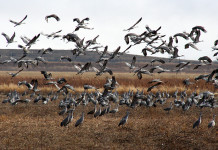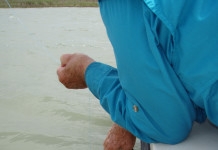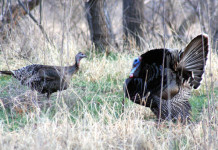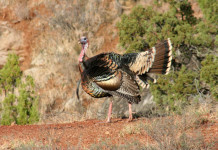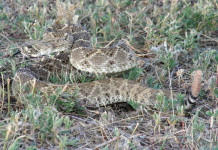The overall annual waterfowl count isn’t as high in previous years, but is still well above its long-term average, which means big things for duck hunters this fall.
The U.S. Fish and Wildlife Service and Canadian Wildlife Service recently completed their annual waterfowl population surveys on the breeding grounds to monitor waterfowl populations, with the figure coming in at just less than 46 million birds. That 45.6 million number is still 33 percent above the long-term average, but is less than last year’s record of 48.6 million ducks.
Population estimates for eight of the 10 surveyed duck species increased or were at similar levels to last year, according to the study.
Estimated mallard abundance is 10.4 million birds, similar to the 2012 estimate of 10.6 million birds and 36 percent above the long-term average.
Blue-winged teal estimated abundance is 7.7 million. Although this is 16 percent below the 2012 estimate of 9.2 million, the blue-wing population is 60 percent above the long-term average. Similarly, the green-winged teal estimate of 3.1 million is 12 percent below last year but still 51 percent above the long-term average. Hunters will be able to bag six teal during the early September season in Texas.
The northern pintail estimate of 3.3 million is similar to the 2012 estimate of 3.5 million and 17 percent below the long-term average.
Estimated abundance of American wigeon is 2.6 million and 23 percent above the 2012 estimate and similar to the long-term average.
The combined lesser and greater scaup estimate of 4.2 million decreased 20 percent from last year and is 17 percent below the long-term average of 5 million. The canvasback estimate of 787,000 is similar to the 2012 estimate and 37 percent above the long-term average.
The May pond count increased 24 percent to 6.9 million ponds, which is well above last year when drought continued to grip much of the United States and Canada.
The annual survey guides the Service’s waterfowl conservation programs under authority of the 1918 Migratory Bird Treaty Act. The Service works in partnership with state biologists from the four flyways — the Atlantic, Mississippi, Central and Pacific — to establish regulatory frameworks for waterfowl hunting season lengths, dates and bag limits.
For more information about the surveyed areas, the survey methodology and the estimates, the Trends Report in Duck Breeding Populations, 1955-2013 report can be downloaded from the Service’s website.




